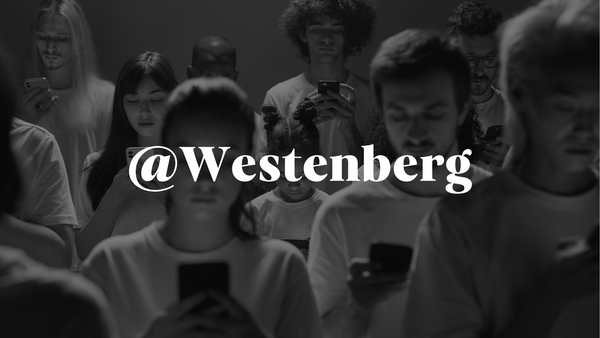There Is No MAGA Meme Masterplan

The endless flood of MAGA memes isn’t some grand strategy—it’s a chaotic shitstorm. Progressives keep overanalyzing, but the truth is, it’s just a troll mob throwing anything at the wall, hoping something sticks.
Progressives and Democrats keep scratching their heads over the seemingly endless flood of MAGA memes and inflammatory right-wing content.
To political commentators (and more than a few social media doomers) the sheer volume and persistence of themed far-right posts suggests a carefully orchestrated campaign, a digital army marching in lockstep to a grand strategy.
But this is, largely, a misconception.
These fuckers aren’t masterminds playing a game of chess with carefully considered moves and countermoves. They’re a rabble-rousing mob of deeply online trolls constantly throwing shit at the wall, hoping something — anything — will stick.
The appearance of strategy and coordination is just an illusion created by the law of large numbers.
A Firehose of Falsehoods
The MAGA meme machine operates autonomously, flooding social media with a constant stream of content. There’s no precision targeting, no carefully crafted messaging, no secret cabal of campaign planners — just a relentless torrent of posts, from individuals attempting to one up eachother, hoping to catch the algorithm’s favor and go viral.
This approach isn’t about persuasion in the traditional sense. It’s about overwhelming the digital space, drowning out other voices through sheer volume.
The content creators behind this deluge aren’t carefully crafting each meme for maximum impact. Instead, they’re producing and sharing at an industrial scale, filling platforms with a constant stream of provocative, offensive, and controversial content.
The Mechanics of Virality
The success of this approach relies on the mechanics of social media engagement. Platforms like Twitter and TikTok are designed to amplify content that generates interaction. Their algorithms don’t distinguish between positive and negative engagement — a heated argument in the comments is just as valuable as a thread of enthusiastic agreement.
When a particularly inflammatory meme or post catches on, it doesn’t just spread through direct shares. The very act of people arguing against it, debunking it, or expressing outrage serves to increase its visibility.
Each interaction, no matter how well-intentioned, feeds the algorithm and pushes the content to an ever-wider audience.
The Bandwagon Effect
As certain pieces of content begin to gain traction, we see another principle come into play: the bandwagon effect.
When a narrative starts to pick up speed, it’s quickly adopted and replicated by others in the ecosystem. This isn’t necessarily because they believe in the message or even understand its implications. It’s an opportunistic move to ride the wave of attention and engagement.
This bandwagoning amplifies the original content far beyond its initial reach. A single provocative meme can spawn dozens of variations, each adding to the overall volume of content circulating online. The original creators don’t need to do anything more; their initial “throw” has set off a chain reaction that perpetuates and expands their message.
The Indiscriminate Nature of Discrimination
One of the most telling aspects of this phenomenon is its indiscriminate nature.
The targets of these memes and posts can shift rapidly, often with little rhyme or reason. One day, the deluge might focus on immigrants. The next, it could pivot to target climate activists, or trans folks. There’s no genius-level divide and conquer playbook here, methodically working through a list of demographics attempting to isolate and attack them one by one. It’s just whatever works, whenever it works.
The lack of a coherent, focused message isn’t a bug — it’s a feature. By casting a wide net, these content creators increase their chances of striking a chord with different segments of their audience. It’s not about maintaining ideological consistency; it’s about maximizing engagement, regardless of the topic, taking over the news cycle, and garnering attention.
Hate-based Shitposting at Scale
We’re not talking about a few isolated trolls or a handful of dedicated extremists. The MAGA meme ecosystem involves thousands, if not tens of thousands, of active participants.
These range from true believers who genuinely hold extreme views, to opportunists looking to gain followers and notoriety, to bots and automated accounts programmed to amplify certain types of content. Each of these actors contributes to the overall volume, creating a self-sustaining cycle that can seem impossible to break.
The sheer scale of content production means that even if 99% of it falls flat and fails to engage an audience, the 1% that does catch on is still a significant amount. And because success in this ecosystem is measured by engagement rather than accuracy or consistency, even the most outrageous or factually incorrect content can thrive if it provokes a strong reaction.
The ubiquity of the “wall of shit” contributes to a kind of normalization. When hateful rhetoric is a constant background noise in our digital lives, we become desensitized to it. This desensitization then bleeds into the real world, shifting the Overton window of acceptable discourse in dangerous directions. And suddenly, everyone’s talking about Haitian immigrants eating pets in Springfield like it’s a normal fucking topic of conversation.
The Trap of Over-Analysis
For progressives and Democrats, the trap lies in trying to ascribe too much intelligence or coordination to this phenomenon. By attempting to decode a grand strategy that doesn’t exist, they risk wasting time and resources on ineffective countermeasures.
Treating this shitstorm of content as a cohesive campaign builds up a sense of powerlessness. If it’s all part of a master plan, how can it be countered? This mindset can lead to demoralization and disengagement, the political equivalent of a death spiral.
The MAGA meme phenomenon, with its constant deluge of bigotry and hate, can seem overwhelming. But by recognizing it for what it is — not a coordinated campaign, but a chaotic torrent of diarrhetic digital pollution — progressives and Democrats can dodge the pitfalls of hand-wringing over-analysis, and avoid getting mired in the muck.




